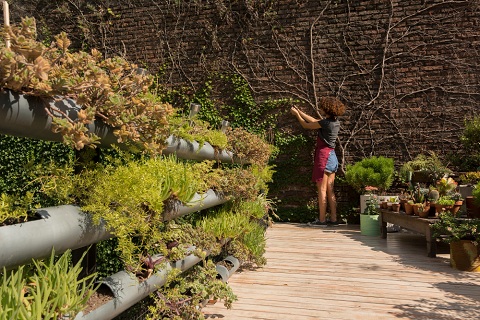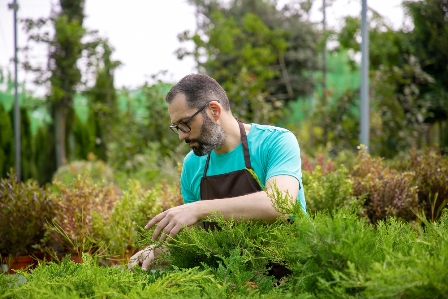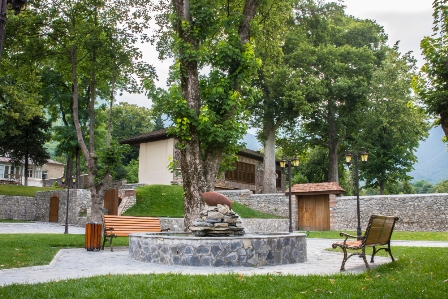Discover the secrets to creating breathtaking landscapes with the right selection of flora. Learn expert tips for choosing plants that thrive and enhance the beauty of your outdoor spaces. Make your gardens come alive with vibrant colors and textures. Planting for Success: Selecting the Right Flora to Create Stunning Landscapes.
Creating a captivating landscape is an art that involves careful consideration of various elements, with flora being a prominent one. The selection of the right plants can transform your outdoor spaces into vibrant and stunning havens. In this comprehensive guide, we’ll delve into the intricacies of choosing the perfect flora to breathe life into your landscapes.
Planting for Success: Selecting the Right Flora to Create Stunning Landscapes
Landscaping isn’t just about arranging plants randomly; it’s about orchestrating a symphony of colors, textures, and forms that harmonize with your surroundings. Planting for success requires a thoughtful approach, understanding your local climate, soil type, and maintenance capabilities.
The Essence of Flora Selection
The process of choosing the right flora is akin to curating a masterpiece. Each plant contributes to the overall aesthetics and functionality of your landscape. By combining plants that complement one another, you create an ecosystem that is not only visually appealing but also sustains itself over time.
Understanding Your Climate Zone
One crucial aspect of selecting flora is considering your climate zone. Different plants thrive in different environments, and choosing ones that are well-suited to your area can significantly enhance their chances of flourishing. For example, succulents thrive in arid climates, while ferns love the moisture of temperate regions.
Matching Flora to Soil Type
Just as different plants prefer certain climates, they also have preferences for specific soil types. Conduct a soil test to determine your soil’s pH and composition. This knowledge will guide you in choosing plants that are naturally adapted to your soil, reducing the need for extensive modifications.
Embracing Biodiversity
A diverse garden is a resilient garden. Incorporate a variety of plant species to prevent pests and diseases from spreading easily. Moreover, biodiversity contributes to the overall visual interest of your landscape, as each plant brings its unique charm to the composition.
Harnessing Color Palettes
Colors play a pivotal role in creating stunning landscapes. Consider the mood you want to evoke – do you prefer vibrant and energetic, calm and soothing, or a mix of both? Harmonize colors strategically, using the color wheel to guide your selections.
Texture and Form
Texture and form add depth and dimension to your landscape. Mix plants with different leaf shapes, sizes, and textures to create an engaging visual experience. Combining grasses with broad-leafed plants, for instance, adds contrast and intrigue.
Planting for Different Seasons
A truly mesmerizing landscape evolves throughout the seasons. Select plants that bloom at various times to ensure year-round beauty. Daffodils and tulips bring a burst of color in spring, while ornamental grasses sway gracefully in the autumn breeze.
Low-Maintenance Options
Not all of us have the time to dedicate hours to gardening. Opt for low-maintenance plants that require minimal attention while still contributing to the splendor of your landscape. Lavender, yarrow, and sedum are great examples.
Local Native Flora
Native plants are accustomed to your area’s conditions, making them a natural choice for a successful landscape. They require less water and maintenance, and they often provide essential habitat for local wildlife.
Creating Focal Points
Focal points are the heart of any landscape. Select a few standout plants to draw the eye and create a sense of visual hierarchy. This could be a majestic tree, a vibrant flowering shrub, or a unique sculpture nestled among the flora.
Here are some frequently asked questions along with their concise answers: about Planting for Success: Selecting the Right Flora to Create Stunning Landscape
It’s best to stick to plants that are well-suited to your climate zone, as mixing incompatible plants can lead to poor growth and maintenance challenges.
You can use a DIY soil testing kit or send a sample to a local agricultural extension office for professional analysis.
Native plants are adapted to the local environment, requiring less water and care while supporting the local ecosystem.
Both have their merits. Perennials return year after year, while annuals provide seasonal pops of color. A mix of both can create a balanced landscape.
Absolutely! By selecting locally available plants and focusing on growth from seeds or cuttings, you can create a stunning landscape without breaking the bank.
Regular maintenance, including pruning and dividing plants, helps prevent overgrowth and maintains the desired look of your landscape.
Conclusion
Crafting a breathtaking landscape with the right flora requires a blend of artistry and practicality. By understanding your environment, embracing biodiversity, and considering factors like climate, soil, and maintenance, you can create a stunning outdoor haven that reflects your unique vision. Remember, every plant you choose contributes to the symphony of colors, textures, and forms that make up your personal oasis.





